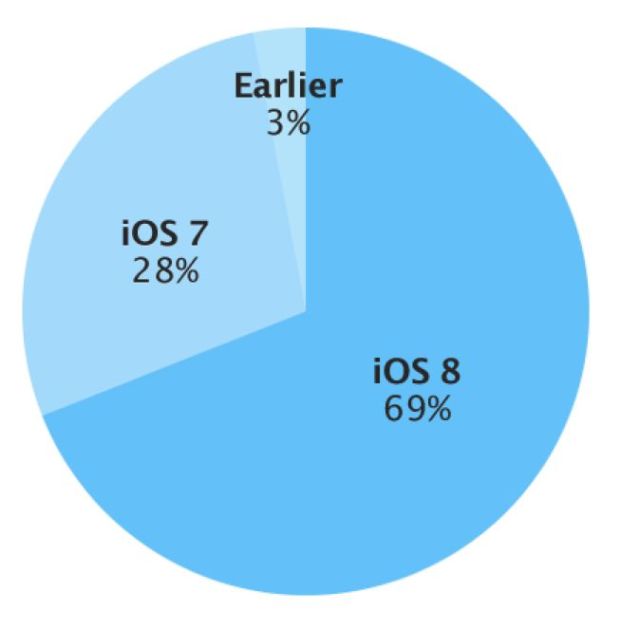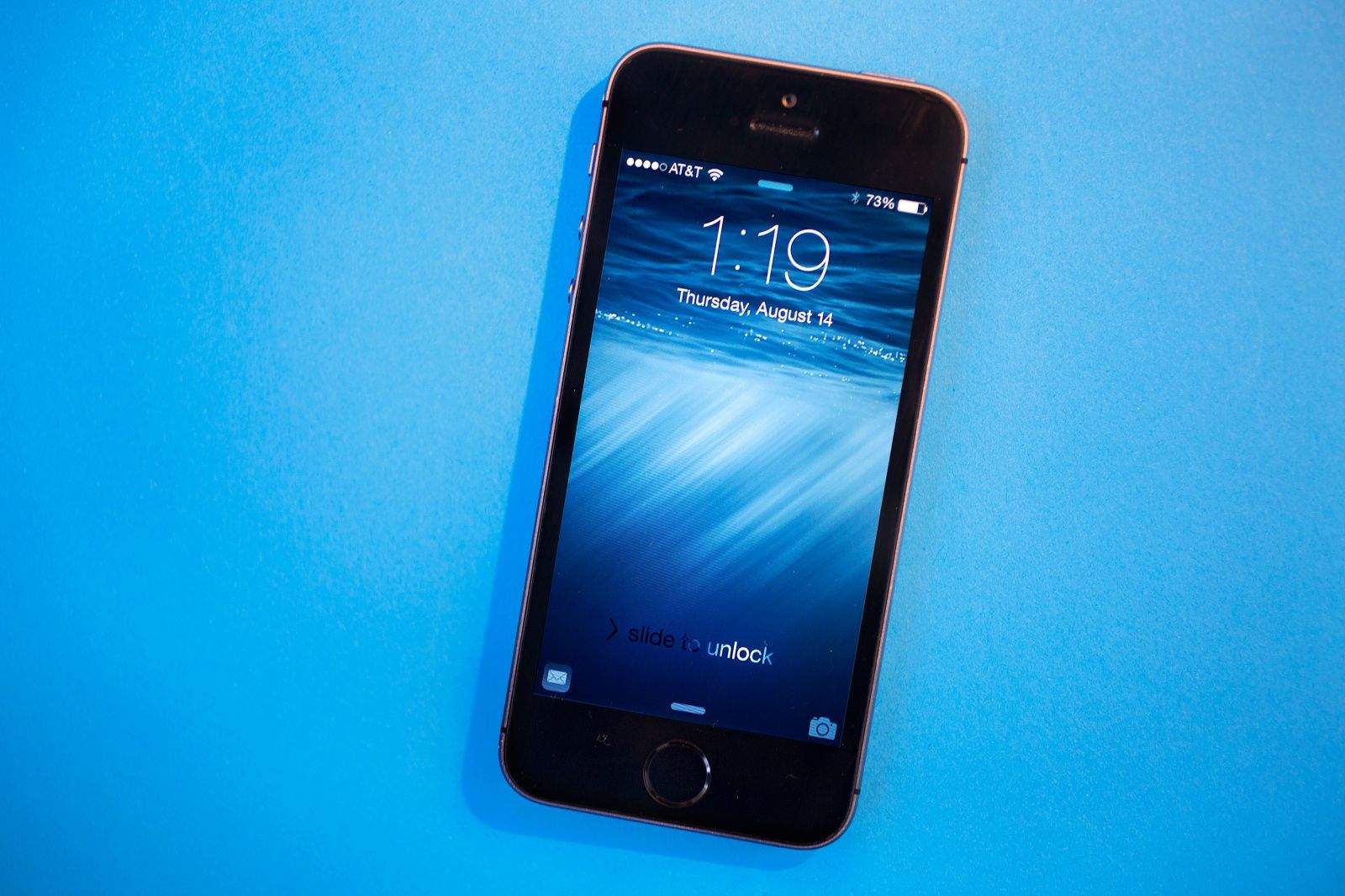Apple is already testing iOS 9, but in the meantime iOS 8 adoption continues to grow — although it’s starting to slow down.
According to Apple’s latest stats, 69 percent of active iOS devices are now using the latest version of the company’s mobile OS; up just 1 percent from January 5, when Apple last shared iOS 8 adoption stats. By comparison, 28 percent of users are still working on iOS 7, with a minuscule 3 percent using assorted earlier iterations.

While Apple would clearly like as many people as possible to use iOS 8, the slowing number of upgrades is no surprise. Adoption increased heavily over the festive season due to the massive number of iOS device activations which took place over the holidays.
Now that those new devices (which came with iOS 8 preinstalled) have most likely been activated, Apple is reliant on a combination of new iOS device sales and older users upgrading their OS.
The iPhone 6 and 6 Plus are continuing to sell like hotcakes — although Apple’s supply has now managed to meet demand — but there is likely a significant portion of users who don’t want to surrender the 2GB required to update their older versions of iOS to iOS 8, or else worry that the new software would slow down their mobile devices.
I’d expect adoption rates to still grow a few more percentage points overall, but the company is never going to hit the highs of iOS 7 (at 80 percent this time last year) — even though it’ll remain well above its Android rivals.
To push iOS 8 adoption, from February 1 Apple will no longer accept App Store submissions from devs, unless they are able to support iOS 8 and Apple’s 64-bit ARM processors.



5 responses to “iOS 8 adoption slows to a crawl after hitting 69%”
There is a very good reason for this though……it sucks on older devices and people have wised up to the fact they are better off with the older versions on there older devices.
It’s not so much that “it sucks on older devices”, but that older devices are not supported.
iPhone 4 and older, and iPad 1, cannot be upgraded to iOS 8.
There are more of these non-upgradeable devices currently being used, than in past iOS upgrades.
The other important thing to remember is that percentage of users using iOS 8 is just one factor that by itself doe not tell the whole story.
Another important factor is the actual number of users using iOS 8, versus the actual number of users using iOS 7 on this date a year ago. We haven’t seen these statistics, but I would bet that the INCREASE in that number would be very impressive!
You need to ask THIS question: What is adoption rate for iPhone 5S or newer.
I am going off experience really before I got the air 2 I updated our older iPad 3rd generation which was not great running iOS 8 and my wife’s 4s is horrible to the point we are having to upgrade her phone earlier than we wanted too.
If u could downgrade it would be around 15%